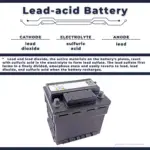What is a rectifier?
A rectifier is an electronic device that converts alternating current (AC) to direct current (DC). It is an essential component in power supplies and other electronic devices where DC voltage is required. Rectifiers are also used in welding applications, battery charging systems, and electrolysis processes. Rectification can be achieved through a variety of methods, including the use of diodes, thyristors, and transistors.
How does a rectifier convert AC to DC?
The basic principle behind rectification is to allow current flow in one direction while blocking it in the opposite direction. This can be accomplished using a diode, which is a semiconductor device that only allows current to flow in one direction. When an AC voltage source is connected to a diode, the positive half-cycle of the AC waveform allows current to flow through the diode, while the negative half-cycle blocks current flow. The result is a pulsating DC voltage that contains both positive and negative components.
To obtain a smoother DC voltage, a filter capacitor is used to remove the AC fluctuations from the output. This capacitor charges up during the positive half-cycle and discharges during the negative half-cycle, resulting in a more stable voltage output. The final output is a DC voltage that has a ripple voltage superimposed on it, which can be further reduced by using additional filtering techniques.
Examples of rectifiers and their applications
The most common type of rectifier is the single-phase bridge rectifier, which consists of four diodes arranged in a bridge configuration. This type of rectifier is used in most household appliances, such as televisions, refrigerators, and computers. In industrial applications, three-phase rectifiers are used to convert high-voltage AC power into high-current DC power, which is used to power heavy machinery and equipment.
Another type of rectifier is the voltage regulator, which is used to maintain a constant DC voltage output regardless of changes in the input voltage or load. Voltage regulators are used in electronics applications that require a stable DC voltage, such as in microcontrollers, sensors, and data acquisition systems.
Advantages and disadvantages of rectifiers
The main advantage of rectifiers is that they allow AC power to be converted into DC power, which is required by most electronic devices. Rectifiers are also relatively simple and inexpensive, making them a cost-effective solution for many applications. However, rectifiers have some disadvantages, such as the fact that they produce a pulsating DC output that requires additional filtering to obtain a smooth DC voltage. Additionally, some types of rectifiers can generate high levels of harmonic distortion, which can cause problems for sensitive electronic equipment.



